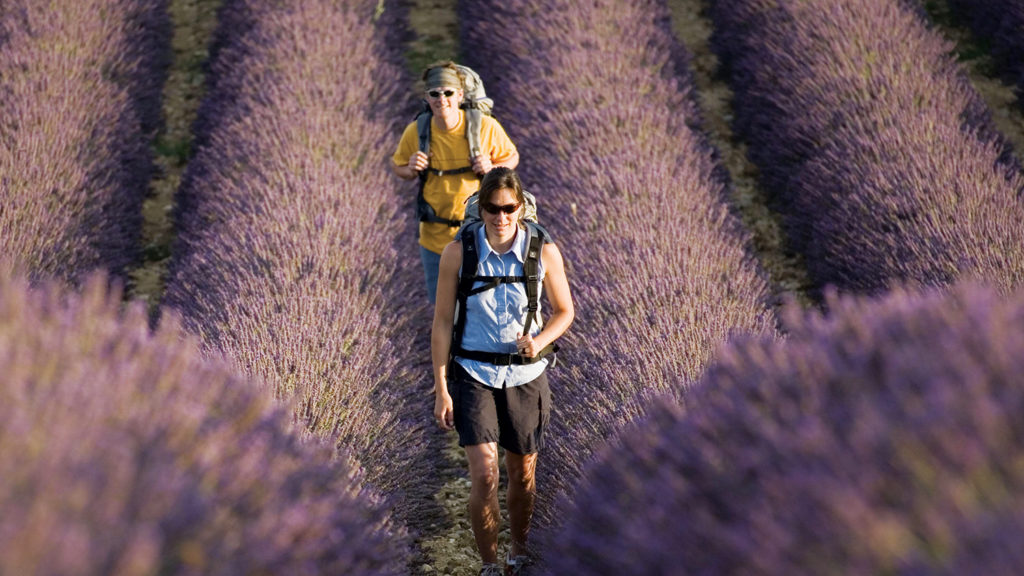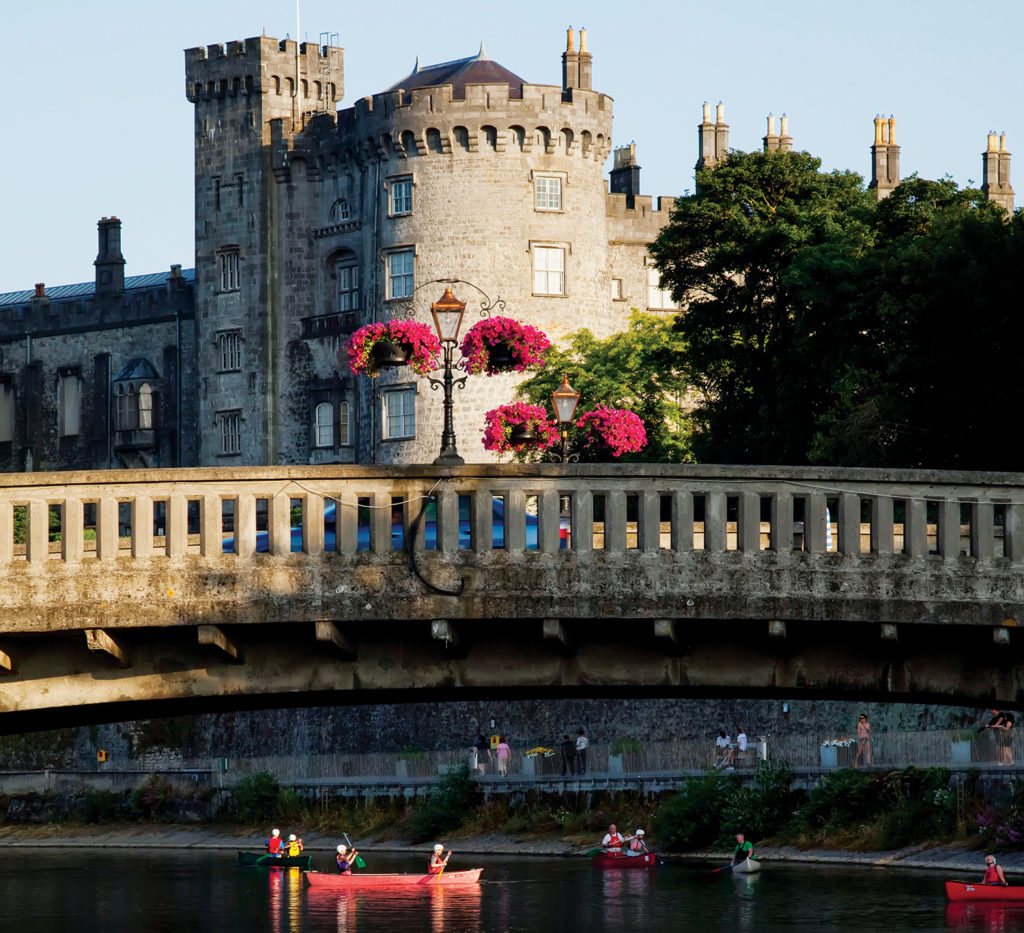In the not so distant past, a trip to Europe meant afternoons in quiet art galleries, strolls through dusty manors and dinners in bustling bistros. Today, vacations on the continent often involve more adrenaline than ambience: cycling down a serpentine bend above Germany’s Rhine River, hiking next to Hadrian’s Wall in England or Irish castle-hopping on a kayak.
Active holidays have been picking up steam as millennials and boomers alike recognize the journey lies in doing, not just seeing. A study by the Adventure Travel Trade Association revealed the most popular holiday activities include hiking, biking, and rafting or sea kayaking. One of the best ways to seek out these adventures is on a river cruise.
Cruise lines, including Uniworld, Viking, AmaWaterways and Avalon, increasingly cater to would-be explorers. Three years ago, Avalon launched Active Discovery on the Danube, a program encouraging travellers to bike, hike, canoe or cave along one of Europe’s most majestic waterways. Adventure-seekers set off from ports on the famed river, which spans 10 countries and winds through bucket-list cities like Vienna, Budapest and Linz.
Varied excursions are now the norm: rigorous outings for active guests; relaxed trails for those who prefer a leisurely pace; and even late-riser tours for non-morning types. “You really can be active as much—or as little—as you want on these cruises,” says Shelley Samycia, AMA’s cruise sales manager. “They’re also ideal for travelling with a partner who isn’t as active. You can see the sights together, but then you can go off to do activities while your partner relaxes on the ship.”
I put her words to the test during my own Danube cruise, which includes a unique caving expedition. Peering up at jagged stalactites, I amble through one of the longest cave systems in Budapest. My group is guided deeper and deeper into the 29-kilometre network of dark passages, accessible only by steep staircases and narrow stone corridors.
While caving, bouts of silence can seem as deafening as a jet engine. But the cavernous void is soon filled by the melody of Leonard Cohen’s classic “Hallelujah.” We follow an angelic voice and soon emerge inside a rocky chapel, the Gellért Hill Cave Church, where a soloist is performing the spiritual ballad. It’s one of those unscripted moments you just can’t find in a guidebook.
Though the Danube remains one of Europe’s most popular cruising rivers, ships have also been popping up on Portugal’s Douro River. Wander-lusters can cycle through hillside villages, sun-soaked vineyards and pastoral Portuguese trails. Other Old World routes worth considering are Germany’s Rhine River and its tributaries—the Main, Moselle and Neckar rivers—and the legendary Rhône River in France, where you can fill up on haute cuisine after a fragrant hike through lavender fields.

A cruise isn’t the only way to ply the waters in Europe. Castle hopping in Ireland takes on a new perspective when done by canoe or kayak. Local outfitters provide the vessels for a time-warp journey along the Emerald Isle’s Ancient East Coast. Pick your backdrop—marshy wildlife in Kilkenny or Trim’s famous castle—and prepare to glide past storied spots while learning local lore with every oar stroke. You needn’t be an advanced voyageur to enjoy the experience.
One afternoon in Kilkenny, we haul our canoe into the mighty River Nore, one of a trio of rivers known as the Three Sisters. As I paddle alongside lush riverbanks beneath Kilkenny castle, an ornithological extravaganza unfolds before my eyes. A heron stoops on a low-lying branch and curious swans eye our boats as we drift by.
MORE TO READ
12 amazing ways to see Europe right now
The Republic of Ireland has more than 3,000 rivers, streams and tributaries—70,000-plus kilometres of waterways to paddle. Most kayak and canoe tours last between two and three hours, and typically require light to moderate exertion. Some of the country’s most iconic fortresses are viewable from the water, including Cork’s legendary Blarney Castle (along with its namesake stone), Bunratty Castle in County Clare and Ross Castle on Lough Leane.
In Trim, I pile into an inflatable raft and gain a new appreciation for the meaning of “old.” Owing to its strategic location on the River Boyne, Trim once surpassed Dublin in wealth, and has more medieval buildings than anywhere else in Ireland—not to mention the largest Norman Castle in Europe.
“Everything on this tour is the oldest, the biggest, the largest,” says James Murray, our Boyne Valley Activities guide. The raft stops by the medieval town walls before we pass beneath Trim Bridge. Built circa 1393, it’s Ireland’s oldest unaltered stone bridge and a fantastic sight from the water.

While paddling has its merits, pedaling provides unique opportunities to really get into the nooks and crannies of a place. “I wouldn’t have seen everything if I had walked,” Shane Shudra says of his bicycle adventure along Ireland’s fabled west coast. The AMA Travel specialization and sales coach ferried from the village of Doolin to the Aran Islands, then rented a bike for a self-guided cycling tour. “It was by far the best way to see the compact isle,” he says.
My own ride meanders through Ireland’s County Meath. At Rock Farm Slane, an organic farm known for luxe glamping, I hop on an e-bike to traverse rolling hills and soak up countryside views. With brooding clouds and flickers of sunlight overhead, I ride past Slane Castle’s dazzlingly lush meadows. Alone save for a herd of grazing sheep, I lean back and inhale so deeply that, for a moment, I forget to pedal.
MORE TO READ
Lisbon for foodies: a colourful culinary capital
For active travellers seeking a more vigorous experience, hiking is another excellent way to explore Europe. Switzerland’s Eiger Trail is a moderate uphill hike that proves well worth the exertion when you reach its apex. The 7.25-km-long path in the Jungfrau region offers jaw-dropping views across the fairy tale-like Lauterbrunnen Valley.
Le Chemin des Rognes is an even more challenging option. The historic—though recently rehabilitated—French Alps route offers four hours of intense hiking, with fabulous vistas of the Chamonix Valley and Mont Blanc as your reward.

And then there’s the Camino de Santiago de Compostela, which crosses into three countries and offers a journey in both the personal and historical sense. Dating from the ninth century, it was one of three great pilgrimage routes of medieval Christendom (the others went to Rome and Jerusalem). Also known as the Way of St. James, the full network of trails—hundreds of kilometres long—has starting points in France, Portugal and Spain, and culminates in Galicia, believed to be the final resting place of St. James the Apostle.
Walkers typically complete just a portion of the route, covering up to 20 km per day. It includes varied terrain: scenic mountains, stretches of plains and coastal paths over-looking the Atlantic Ocean. Along the way, modern-day pilgrims can discover historic churches, monuments, charming villages and cozy restaurants. For a well-deserved rest, luxurious paradores (charming guesthouses) and budget-friendly albergues (hostels) run by hospitaleros (Camino volunteers) provide a range of accommodations.
MORE TO READ
Must-see European river castles
For AMA member Deb Troppmann, walking the Camino Trail was about more than being active on a vacation; it was part of her personal road to recovery. The Edmonton resident and transplant survivor set off on the hike to commemorate the anniversary of her liver transplant.
“The trip was so much more than just a holiday,” she says, reflecting on her 150-km trek, which she also undertook in support of the Canadian Liver Foundation. “I’ve never walked so much in my life,” she says. “But with every step, I gave thanks for being there.”
For Troppmann and other Albertans searching for meaning and adventure, active travel lets you live in the moment and revel in every second of the journey.

GO IT ALONE
Another way to enjoy active travel
Rent a private houseboat for a go-at-your-own-pace river cruise. With more than 950 vessels and numerous itineraries to choose from, Le Boat provides everything you need to ply world-famous waterways—and discover celebrated cities—in the U.K., Ireland and much of central Europe. Or you can stay in Canada with a trip along Ottawa’s UNESCO-designated Rideau Canal.
Equip your boat with a few kayaks or stand-up paddleboards to get an open-air view while you meander along the Thames or cruise the canals around Amsterdam—or add bicycles for some active onshore exploration. Le Boat ambassadors can also offer recommendations for fishing excursions, golf and more. No special boating licence or experience is necessary: in-depth safety and operational training is provided before you embark.
BOOK WITH AMA
Camino de Santiago Trek (Exodus Travels)
Spend nine days exploring one of the world’s oldest pilgrim routes, lined with medieval monasteries and unspoiled rural scenery. This small-group trip includes overnights in pensions or two- to three-star hotels, luggage transfers, all breakfasts and six days of point-to-point walking.
May to Oct. 2022 departures
From $2,375 (tour-only)
Contact an AMA Travel specialist online or at 1-866-667-4777
